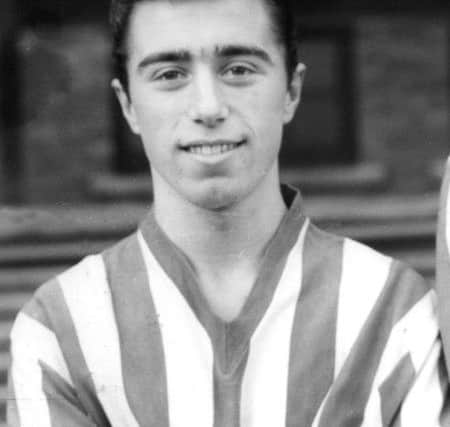Why the 60s was just like modern-day Sunderland


In their new book Sunderland in the Sixties Revisited Alan Brett and Philip Curtis point out many similarities between life on Wearside a half century apart.
When you take a good look, 1996 and 2016 had a lot in common in Sunderland.


Advertisement
Hide AdAdvertisement
Hide AdBread, bingo, football and nightlife - there’s similarities all over the place. Let’s take a closer look.
* THE WORLD OF BINGO;
At the beginning of October this year, the online bingo company Tombola announced plans for a new £5million building on the East End riverside. It will go up next to Tombola’s present headquarters in the Rose Line Building at Wylam Wharf.
In the days before the internet, Wearsiders could play bingo by a combination of post and radio.


Players marked off their numbers by listening to Radio Luxembourg and, in 1962, a lucky man from Castletown won the top prize of £5,000.
Advertisement
Hide AdAdvertisement
Hide AdAt the time, Sunderland printers Edward Thompson was producing 50 million bingo tickets a week. By the 1970S, it was the largest supplier in the world.
The decline of bingo halls and workingmen’s clubs SAW a reduction in demand but the company, in Richmond Street, still turns out bingo tickets in their millions today.
In 1969, a brand new red Mini was the prize in a bingo game at the Savoy in Southwick.
As one of the iconic cars of the Swinging Sixties, the Mini was often a popular prize in competitions run by local companies. Vaux Breweries gave away a dozen as prizes in 1961.
Advertisement
Hide AdAdvertisement
Hide AdToday the latest version of the design classic is popular on Wearside and even some of the originals can still be seen on the road.
* SUNDERLAND’S NIGHTLIFE;
If a businessman had got his way in 1967, the Wear would have had a floating nightclub decades before the Tuxedo Princess and Tuxedo Royale were berthed on the Tyne at Gateshead.
Thomas Fraser put forward plans to moor his converted paddle steamer Princess Elizabeth at the North Dock.
When the River Wear Commissioners revealed it would cost half a million pounds to provide facilities for such a venture the plan was dropped.
* BATTLE OF THE BREAD;
Advertisement
Hide AdAdvertisement
Hide AdIn price wars with their rivals, 21st century supermarkets sometimes sell bread at less than what it takes to produce.
But this ‘loss-leader’ to get customers into their stores is not a new sales ploy.
In 1963, Moores Stores was selling bread at a loss but for different reasons. They were in a war against shops that gave away trading stamps with goods purchased.
Moores dropped the price of a loaf between a penny and threepence to lure customers away from the attraction of shops that gave stamps which could be collected and later exchanged for gifts.
* THE WORLD OF SPORT;
Advertisement
Hide AdAdvertisement
Hide AdIn the last few seasons Sunderland AFC have been in relegation dogfights. It’s nothing new. And neither is the Black Cat’s having a saviour in the forward line.
For the whole of the 1960s the club was involved in either relegation or promotion battles, and just like now, a hotshot striker was endearing himself to the fans.
Having just scored his 150th Premier League goal, Jermain Defoe is undoubtedly one of the greatest goalscorers of his generation and is crucial to Sunderland staying up this season.
Over half a century ago, a striker of similar stature led Sunderland’s five-man attack.
Advertisement
Hide AdAdvertisement
Hide AdNicky Sharkey was exactly the same height as Jermain and he too was regularly on the scoresheet.
Sunderland in the Sixties Revisited is available from Waterstone’s, Sunderland Museum, Sunderland Antiquarian Society and www.summerhillbooks.co.uk priced £4.99.